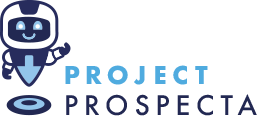As more specifiers look to do their product research online, having a strong digital presence is crucial. Having a clear and helpful website is the first step in setting up your business to convert Barbour ABI prospects into customers.
The website should be considered a part of a wider digital marketing strategy but it’s one of the most vital aspects. Your website should be seen as your virtual storefront, people may become familiar with your brand through other platforms such as social media, or trade shows but your website is the place they visit when they want more information about your business and your products or services.
With this in mind here are 5 easy fixes for your construction products website to give a good first impression, communicate the essentials and educate your Barbour ABI prospects.
1. Have an offer above the fold
Above the fold refers to the images, text and links that appear on a website before you scroll down. (It comes from the newspaper industry). It’s the first thing anyone sees when they load up your website, so this must make a good impression. It must also direct people immediately to where they want to go next, with minimum thought or effort on their part.
The ‘offer’ doesn’t refer to a discount code or coupon but a message. This message should use ‘short, choppy copy’, be enticing to potential customers and be customer-centric. This means it needs to succinctly explain how your business can help your target customer overcome their challenges by providing them with a solution. Use one short sentence that’s relevant from the customer perspective. Consider what your customer will achieve/overcome by becoming your customer, and then tell them exactly this.
Here are some further things to consider with any features that are positioned above the fold of your construction products website’s homepage. Make your assurances aspirational, how are you going to make the customer’s job/life easier. Tell them the problem you’re going to solve for them, be direct and spell it out in a clear way.
2. Include clear calls to action
A call to action (CTA) is typically a button, image or line of text that encourages the reader to do something. A common example would be a ‘Buy Now’ button placed in the top right corner of your website, this is an example of a direct CTA. CTA’s are also used to drive traffic to your content, such as newsletter sign-ups, eBook downloads, or fill out contact forms, these are known as transactional CTA’s.
They need to be eye-catching, actionable, clear and specific. They also need to be placed in the most effective places possible. Research shows when we come on to a webpage our eyes scan the page in a Z pattern from top left, to top right, then bottom right to bottom left. So place your CTA’s accordingly. Be consistent with their design and make sure the landing page that the CTA links to is consistent with the offer in the CTA. If you have a disparity in the number of page views to the number of submissions on a CTA landing page, then the message/offer on the landing page probably doesn’t match the expectation that the CTA presents.
Repeat your CTA’s throughout your website and have a mix of both direct and transactional to ensure you’re providing a relevant offer to customers at different stages of the buyer’s journey.
3. Use images of success
A website is a visual medium so don’t just stick to words, use images, photos, videos and icons to bring your page to life and show your customers what you’re going to do for them. A key suggestion is using images of your staff to put a face to your brand. Your customer will connect with you on a deeper level. Rather than using stock images, create a familiarity between your website visitors and your staff.
Show images of current and past customers being pleased by the experience that your products and services have provided to them. Images of success will resonate in your potential customer’s minds. Don’t forget to show your completed projects and images of your products, both as singular item items but also how they playing a part in making a project a success.
4. Breakdown your offerings
If you sell lots of products, provide various services, or combine both, it can be difficult to explain this to a new customer in simple terms. You need to find an umbrella term that encompasses what you do and then turn this into your key message.
Use the points in tip 1 to create this message. You can then diversify further down your homepage or on separate pages, perhaps set up your website in two halves if you sell a product as one revenue stream and install that product as another. Your messaging needs to be specific for each of your offerings but have a consistent them of wanting to help the customer to overcome their challenge.
You might be thinking your business model is too complex to be simplified in such a way but finding that umbrella term that unites everything you do will help break it down for both you and your customers. Breaking down the revenue streams of your business gives your construction products website visitors a clear path to follow so they can achieve their goals.
5. Use as few words as possible
Websites, social media and blogs all get scanned more than they get read. A study showed that ‘79% of test users always scanned any new page they came across; only 16% read word-by-word.’ So adapt your website to reflect this, if you’ve got a large paragraph at the top of your page it’s going to get ignored.
Remember to keep all your copy brief, punchy and relevant to the customer. As you move further down your construction products website you can include longer bits of copy but still clear of extended paragraphs. Imagine you’ve got 10 tweets to write all the copy for your website and stick to that. This way you’ll break everything down to the essentials without the added fluff or start to talk about your own business too much. Remember the focus is on the customer and how you can help them, so help them by keeping it concise and digestible.
If under certain circumstances you do need to write a paragraph or two, maybe under a product description, then use a read more link that expands the text if the website visitor wants to read it. Give them the choice to take in the information that is relevant to them and their problem. Images, bullet points, and video can all replace text and make your website user friendly.
Conclusion
By using these 5 easy fixes for your construction products website, you can make a productive effort to improve the experience that potential customers have when they visit your website. Summarise what you can do for Barbour ABI prospects above the fold of your website, signpost your content offers using CTA’s, use plenty of images to prove your successes, break down your offerings to keep your messaging targeted and keep your copy clear and concise. Make these straightforward changes and you’ll be providing value to your construction products website visitors every step of the way.



